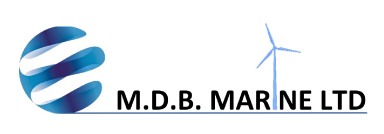Subsea Mapping
REALTIME IMAGES
Subsea Mapping
Subsea mapping, also known as underwater mapping or hydrographic surveying, is the process of mapping and charting the seafloor and its features. It involves the
use of specialized equipment and techniques to acquire accurate and detailed
information about the underwater topography, bathymetry (depths), and
geological features. Subsea mapping is essential for a wide range of
industries, including offshore oil and gas, marine construction, environmental
monitoring, and underwater research. Let’s delve deeper into the world of
subsea mapping.
The primary purpose of subsea mapping is to gather precise data about the underwater environment. This information is crucial for various applications such as planning and decision-making for offshore infrastructure installation, pipeline routing, environmental impact assessments, and resource exploration.
Several techniques are employed in subsea mapping. One of the most common techniques is multibeam sonar. Multibeam sonar systems emit sound
waves in a fan-shaped pattern, measuring the time it takes for the sound to
bounce back from the seafloor. This data is used to create detailed bathymetric
maps, capturing the shape and contours of the seafloor. Multibeam sonar
provides high-resolution and accurate depth measurements, allowing for the
identification of underwater features and potential hazards.
Side-scan sonar is another widely used technique in subsea
mapping. It uses sound waves to create detailed images of the seafloor.
Side-scan sonar systems provide high-resolution representations of underwater
features, including wrecks, rocks, debris, and biological structures. These
images help in identifying and assessing the condition of submerged objects and
natural formations.
Seismic surveys are employed in subsea mapping to determine
subsurface geology, locate potential hydrocarbon reservoirs, and identify
geological hazards. This technique involves sending acoustic signals into the
seabed and recording the reflections. By analyzing the reflected signals,
researchers can gain insights into the subsurface structures and geological
composition.
Lidar, both airborne and waterborne, is also used for subsea
mapping. Lidar systems utilize laser beams to measure distances and create
precise topographic maps of the seafloor. Lidar is particularly useful for
shallow water mapping and coastal zone management. It can capture highly
detailed bathymetry and provide information on coastal erosion, sediment
distribution, and underwater features.
Once the data is collected, it undergoes extensive processing
and analysis. Specialized software is used to process bathymetric data, remove
noise or artifacts, and interpolate missing or sparse data points. The
resulting bathymetric maps can be visualized in various formats, such as
contour maps, 3D models, or integrated into Geographic Information System (GIS)
platforms. These visual representations enable researchers, engineers, and
decision-makers to better understand the seafloor and make informed choices.
Subsea mapping has numerous applications across various
industries. In navigation and charting, accurate bathymetric charts and maps
assist in safe navigation for ships, submarines, and underwater vehicles. For
marine infrastructure development, mapping the seafloor aids in the planning,
design, and installation of offshore structures like oil rigs, wind farms,
subsea cables, and pipelines.
Environmental monitoring benefits from subsea mapping as it
helps assess and monitor marine habitats, coral reefs, underwater ecosystems,
and areas of environmental concern. In resource exploration, mapping can
identify potential mineral resources, hydrocarbon reservoirs, or underwater
archaeological sites.
Coastal engineering is another area where subsea mapping plays a
crucial role. Understanding coastal bathymetry and sediment distribution
assists in coastal zone management, beach nourishment projects, and erosion
control.
In conclusion, subsea mapping is a vital process for acquiring
accurate and detailed information about the underwater environment. It employs
techniques such as multibeam sonar, side-scan sonar, seismic surveys, and lidar
to gather data on bathymetry, geological features, and underwater structures.
The collected data is processed and analyzed to generate accurate maps and 3D
models, providing valuable insights for navigation, marine infrastructure
development, environmental monitoring, resource exploration, and coastal
engineering.

